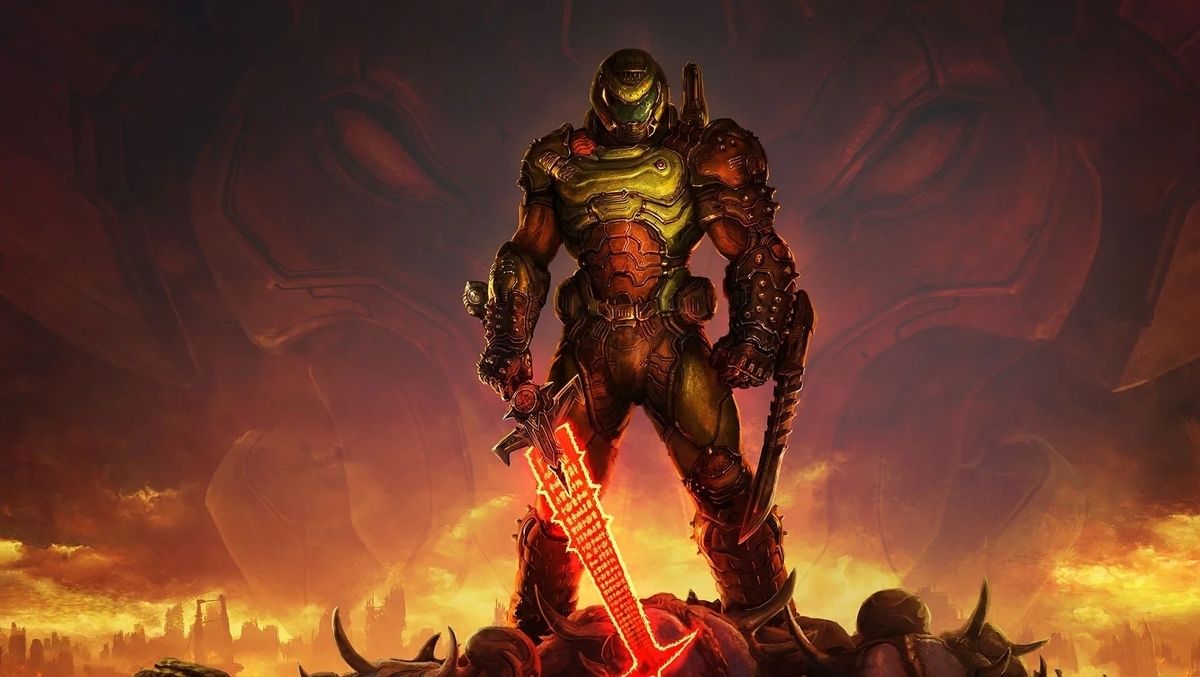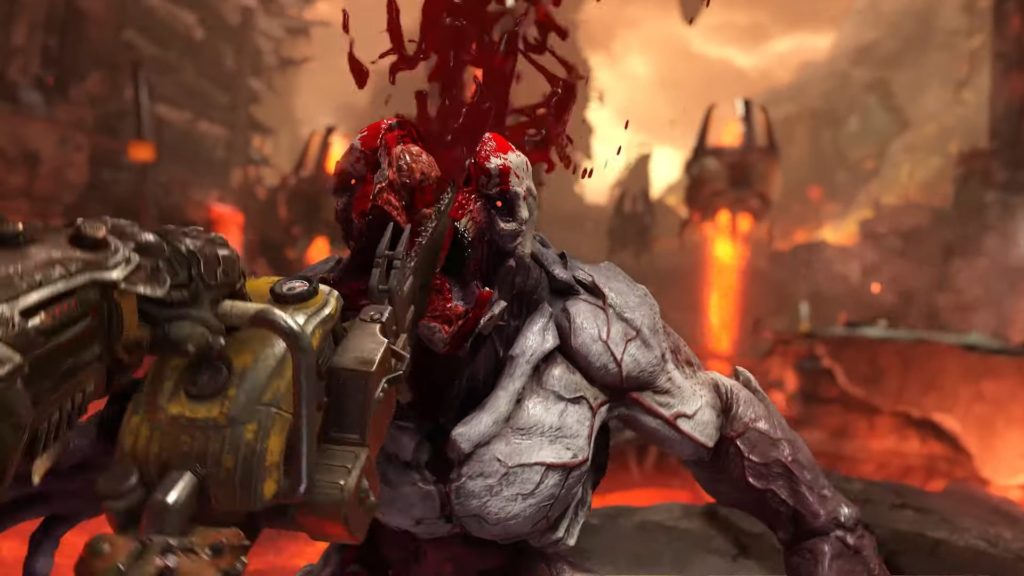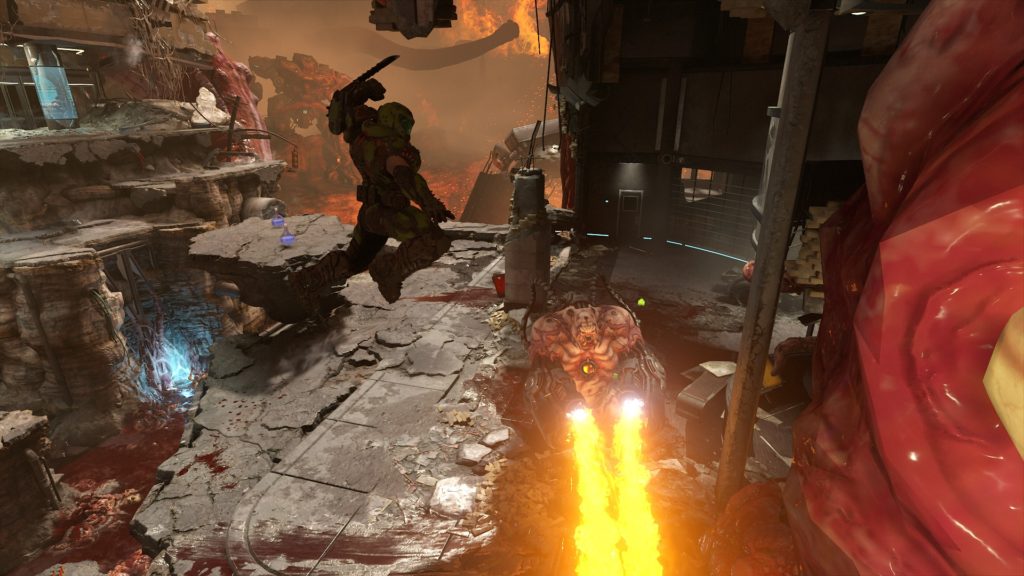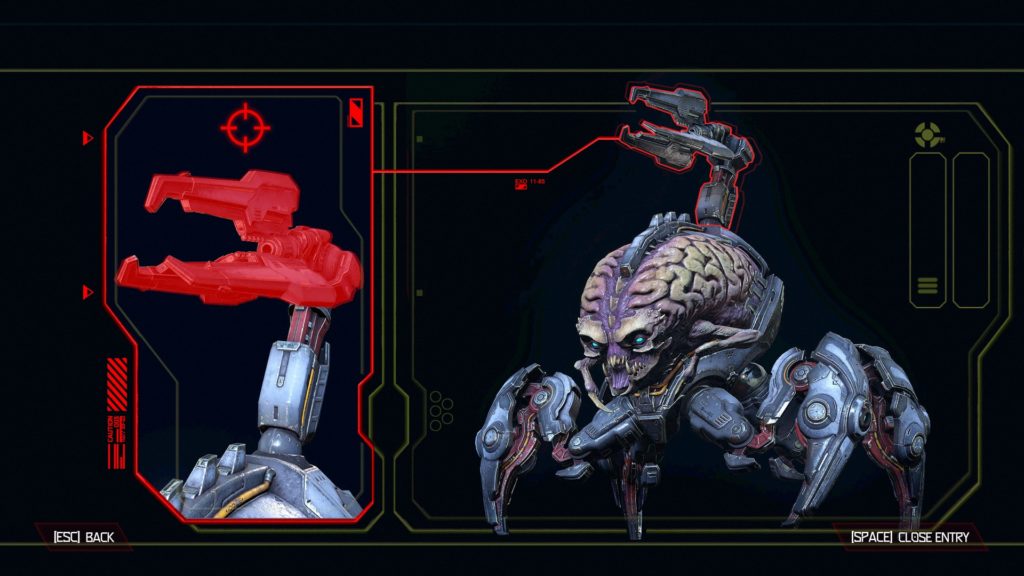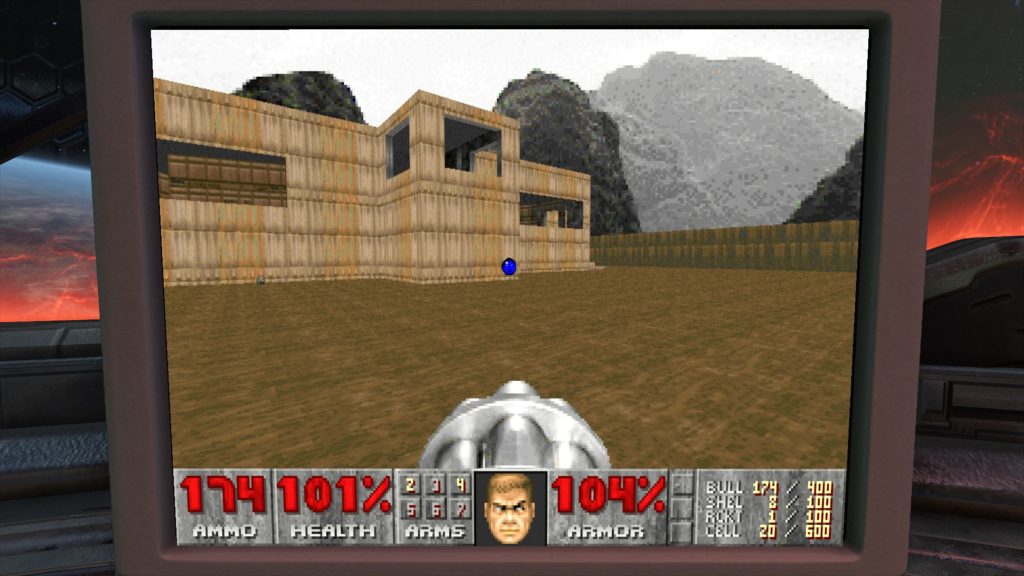It’s been four years since the last Doom game, and four months since Doom Eternal was originally slated for launch. Delay painfully accepted, we awaited this new entry in the most important FPS series of all time with bated breath and now, finally, Doom Eternal is in our hands. With huge changes, a solid campaign length, and more additions promised down the line, my time with Eternal was spent enraptured, but chances are this won’t be the case for everyone.
When it came out in 2016, the new Doom was, in many ways, a return to classic form. Speed was the key, and the revolutionary push-forward combat facilitated a form of aggressive play that was seemingly eagerly dismissed in the new millennium. So well received was this reboot, that developer ID Software could have been forgiven for simply giving players more of the same, and while a great many elements are shared between the two games, the overall feel is different enough that Doom Eternal risks alienating a portion of 2016’s audience.
Gameplay
Most of your time in Doom Eternal will be spent, as it should in a Doom game, crushing the hordes of demons stupid enough to stand in Doomguy’s way. To accomplish this, the player is entrusted with a variety of weapons, abilities, and a selection of empowering runes. Most of these will be familiar to those who played 2016, or even older Doom games in terms of classic weapons, but it is the addition of three particular features that form the backbone of Eternal’s new combat philosophy.
These are the Flame Belch, recharging chainsaw, and dash.
Flame Belch
The Flame Belch, a short-range flamethrower which sits on your shoulder, quickly catches any demon in a close-range cone alight. While in this state, the enemy will take slight damage and, more importantly, continuously leak small armor shards. Direct damage or killing an enemy while they are in this state will cause a great deal many more shards to drop, effectively acting as the armor-based cousin to the returning glory-kill health drops.
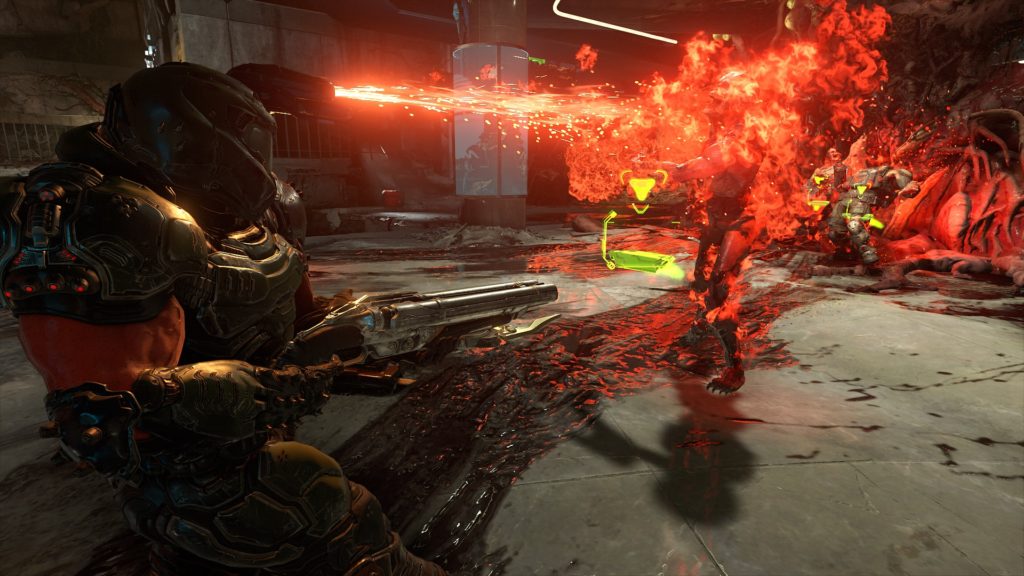
Chainsaw
Regaining its use from 2016 is the chainsaw. Just as in the prior entry, this weapon is used to turn whoever is unlucky enough to be on the receiving end into an ammo pinata. While this was absolutely useful in 2016, in Eternal its changes make it a much more crucial, if different, tool.
For a start, the chainsaw is given a button to instantly activate, just like the Flame Belch or melee, you no longer need to equip it. This makes the chainsaw much quicker and more practical in the middle of combat. Like glory kills, it can effectively teleport you towards a target from a small distance, closing the gap in the blink of an eye. If you’re not prepared for it, this effect can be a little discombobulating, though you’ll soon get used to it, and can even use it as a minor traversal tool.
Also different about the chainsaw is its lower maximum fuel. This means it can no longer effectively be used as an instant get-out-of-my-face for the largest demons, as even when full, it simply won’t be able to tackle them. There is, however, another weapon unlocked late in the game which can fulfill this purpose.
The final and most crucial change to the chainsaw comes from its ability to regenerate a single pip of fuel. Because ammo pickups are so much rarer in Eternal than 2016, and maximum ammo, in general, is lower, this makes your chainsaw a near ever-present tool for stocking ammo from the lesser enemies which continuously spawn in the battle arenas.
Dash
Unlocked early in the game, the dash acts like the double jump did in 2016, only on a horizontal plane. Dash has two charges and takes Doomguy only a small distance, but this is indispensable for quickly navigating around enemies, towards others, and generally acts as the primary means of rapid mobility.
It also recharges quickly on the ground, though it won’t recharge in the air, making picking the time to use it and when to save it one of the game’s most consistently important elements. Combined with the new ability to swing off of bars and climb on certain surfaces, both action and exploration see immense jumps in navigational potential.
The New Loop
It is these three new or modified components, in addition to glory kills, which dictate the largest changes to Eternal’s gameplay loop. With limited ammo and more aggressive enemies in general, the game is essentially built around balancing resource management in an extremely hostile battlefield.
Introducing yourself with an opening volley, picking targets, working your way through the biggest threats, identifying groups to burn with Flame Belch, dashing through to smaller enemies and, dropping them with the chainsaw, choosing who to glory kill and who to finish outright, all these elements and more have to be rapidly calculated as the game opens up and demands increasingly more from the player. Having just finished a nightmare playthrough of 2016 in preparation for this game I thought I was prepared. I was not.
Doom 2016 had purity, it was brute-force and straight lines. Eternal, on the other hand, is a much more complex beast to play. Inevitably, this core-loop will make the game far more divisive than the first, but for my money, it takes an already great formula and makes it that much more engaging, gratifying, and challenging.
Part of this comes from how the game adopts the heavy-metal philosophy of being grim-dark while simultaneously not taking itself too seriously. Eternal knows it’s a game, and the loot fountains, explosions of color, question mark secrets, and 1up bonuses illustrate this clearly. Some of the sounds effects and glory kills even occasionally slip into slapstick, with headshots triggering a pop sound, cacodemons gulping down explosives, and the head-thunk possessed melee execution especially reveling in their absurdity.
All of this is aided by Mick Gordon’s fantastic soundtrack. Kicking into high gear when the action starts and fading out into more atmospheric wails during exploration perfectly contributes to the action and exploration whenever needed. There’s also a far-greater reliance on referencing classic tracks, which leaves a great impression for long-time fans.
The Rest of the Arsenal
You can’t avoid the loop in this game, not if you want to succeed. The fine-points of how you go about this though offer considerable variety based on slaughterous playstyle and preference in dismemberment.
The single-most personality-driven component of customizability comes from the rune system. These give you the chance to choose three runes to run at once, each of which modifies the experience to suit your specific playstyle. Some are based around improving glory-kills, one effectively acts as an extra-life, while another gives the player a limited amount of slow-motion while in the air. You start unlocking these early in the game, and you can choose which to unlock at each rune station, meaning no being stuck with the choices that could be forced on you in the previous game.
Grenades see a return but are now launched from a shoulder cannon rather than being tossed manually. Coming in two varieties, frag and freeze, these can help to give the player a little breathing room. Like the rest of the options, they can be a little overwhelming to work with while juggling everything else. This is further complicated by the fact that the two can be toggled on the fly, and don’t share a cooldown.
In terms of standard weapons, you get the expected loadout of shotguns, machine guns, plasma guns, and heavy weapons which appeared in 2016. Some of these, like the ballista and rocket launcher, are modified to slight or substantial degrees, though their fundamental place within the arsenal remains mostly the same. The pistol is now gone, with the shotgun taking the first weapon slot, which is a logical choice, and the rail-gun now has a slightly less over-powered siege-mode, while still being incredibly useful.
Weapon mods return, most of which are again comparable to their prior iterations. While mostly the same, some are undeniably cooler than before. The shotgun, for example, has a new chaingun-style mod which, while functionally similar to the older charge shot, is infinitely more enjoyable to use. Eternal furthermore sees the victorious return of the original plasma rifle, which now adopts the look of Doom 1/2’s classic weapon number 6.
Enemies
Demons have always been the stars of Doom, and Eternal introduces some new challenges alongside the reintroduction of some older fan-favorites. The brunt of the demon forces still consists of Imps, while the Zombiemen of Doom 1 and 2 bolster their ranks as unreliable companions. Infighting among these two groups is common, and while not often helpful, it’s always a joy to watch.
Arachnotrons make their return surprisingly early while being far more lethal than ever before. Pain Elementals similarly rejoin the battle, trundling along through the sky with all the lack of grace that made them such famous meatballs back in 1994. They’re also considerably less frustratingly horrible to deal with than they were in Doom 2, with their Lost Souls and Lost Souls, in general, being very rare sights. The Archvile, as revealed in last-years trailers, equally puts up a hell of a fight, though he’s not the biggest of the returning and reimagined threats.
Of the new enemies, which we don’t to spoil too much, there is one called the Marauder which proves a far greater challenge than the rest. Requiring a different tack than every other opponent you fight, this ancient warrior proved a sticking point for many early-reviewers. Rest-assured that just by paying a little attention, his weak point becomes an obvious and easily exploitable one.
A greater system that applies to all enemies, though of different levels of importance, is that of visible damage. For some, like the new Barons of Hell, damage simply strips away their flesh to reveal the fiery magics which fuel them. Others, like the Revenant and Mancubus, can have their weapons targeted and blown off, massively reducing their overall threat.
Bosses also expectedly return, though limited in number. Some early bosses end up returning as semi-regular enemies, somewhat mitigating their initial encounter’s effect but there are still a few one-off encounters which fans of the original games should appreciate.
In total, it’s not just the addition and expansion of enemies which contributes so much to Doom Eternal, it’s the effect which the new combinations can have in the game’s many cleverly designed encounters. An Archvile might take the backlines while Mancubi form a shield to break through or circumnavigate, or Pinkies might charge from below while Revenants provide fire support. Each battle is a puzzle, and with Doomguy’s new mobility options, and maps which rely heavily on traversal, the puzzles have many bloody solutions.
Story
Going into 2016, few expected that the lore of Doom would be anything other than a minor distraction. As it turned out, what small parts of an outrighted stated plot existed turned out to be a huge draw, with many wondering what implications the game could have on the overall Doom canon. Eternal answers many lingering questions, but in some cases, it’s guilty of inconsistent delivery and overindulgence.
I was one of those who went into Eternal looking forward to learning more, reading every log as they appeared. And appear they did, one after another, and another, and another. In the end, Doom Eternal leans so heavily into the story aspect that it can be exhausting, at least if you consume it as you go.
Probably a better way to appreciate the lore is to ignore the texts and logs as you collect them, and instead go back later to consume them en masse. Otherwise, chances are you’ll suffer from constant gameplay whiplash like I did, rapidly jumping from extreme activity to gentle reading.
Again, avoiding spoilers, as the trailers revealed, the general idea of the story is that Hell has expanded, and has come to earth. Putting a stop to this destruction means hunting down some of the biggest players in the cosmological game, and feeding them an unhealthy dose of lead. That is not to say that you’ll be confined to earth, however, as in your time in Doom Eternal you’ll also visit other places in the solar system, and far beyond.
There’s a lot more variety and depth here than many were expecting, and while it can largely be ignored (cutscenes can be skipped this time around), those willing to spend the time can find the grounding for an in-depth Doom universe.
The Overall Picture
Doom Eternal is a wide expansion of what was already a revolutionary new take on the genre. Holding to the original game’s legacy as well as the 2016 reboot’s has ensured a solid basis, but the expanded systems and changes to the fundamental gameplay loop will undoubtedly prove overwhelming and disaffecting for some players.
That said, if you’re looking for some of the most challenging, satisfying, and demanding single-player FPS action that’s reached gaming, then you’ll be hard-pressed to find anything better. With great weapons and levels, as well as a huge bestiary, Eternal is a game that swings for the fences and connects far more often than not.
